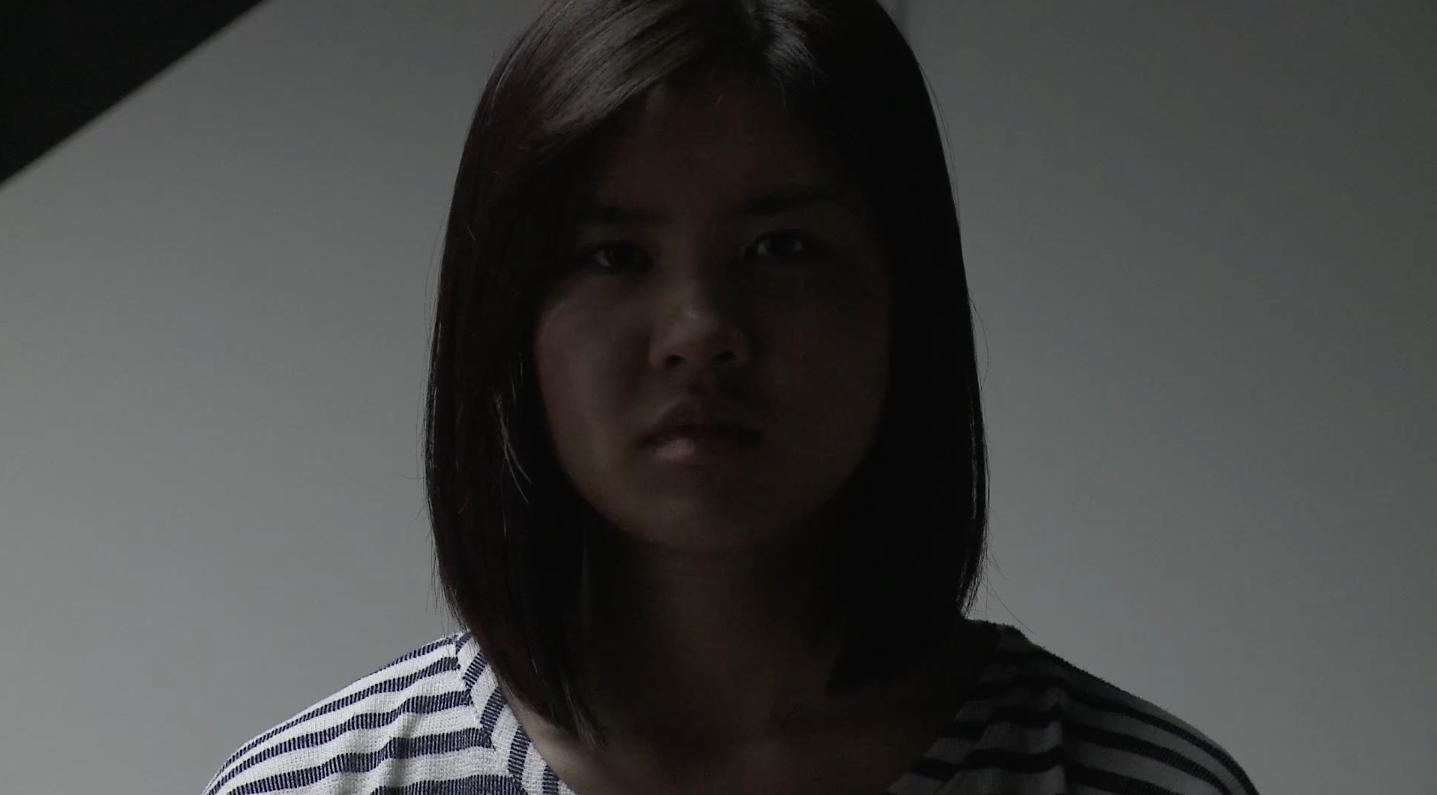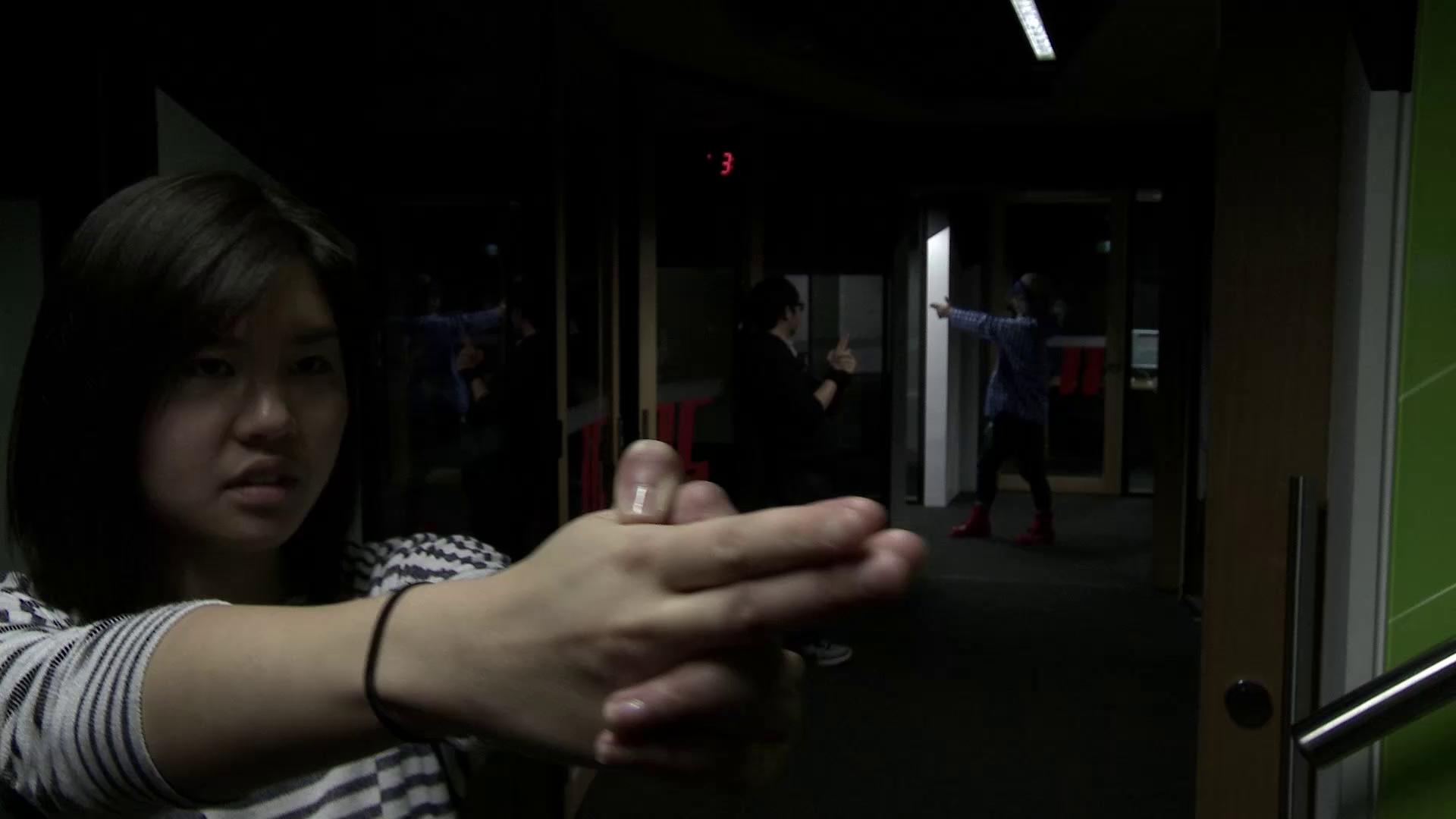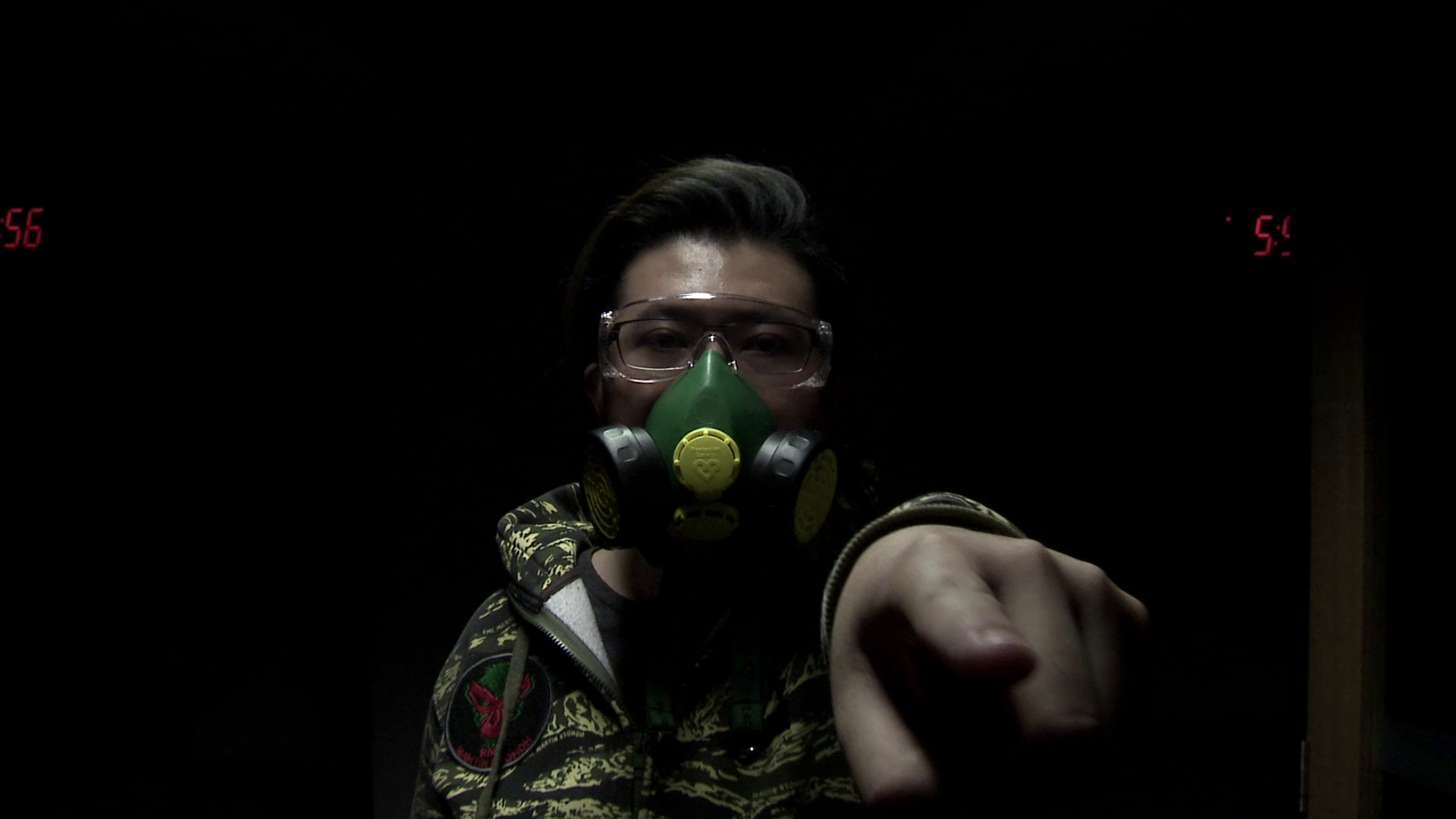Monster from Kai-feng Wang on Vimeo.
In my latest shooting, the original idea is from Johnnie To’s The Mission (1999). Actually, I have learnt something from the gunfire scene in a emporium which I have talked about in my previous posts. This time, I try to achieve a mise-en-scene as Johnnie To have done in his The Mission.
(Monster)
Mise-en-scene
As I mentioned in the last post, the space in the ‘Shopping mall scene’ is expandable because Johnnie To purposely place characters in particular spot creating a 3D space. This idea inspires me that the space in editing suite is very deep and concentrating. Therefore, I position Evelyn in the foreground, Henry in the mid-ground and Aki in the background in order to full fill the space. The composition creates a rhythm that leads audience to watch. Evelyn start retreat away from the stairway, while Henry is approaching forward. Finally, Aki, the furthest one, stands at the end of path way to cover the front.
In addition, the lighting is very dramatic in the editing suite. I just put characters at the spots where the light can highlight them. There are two reason makes me do this. First of all, characters are popped from the dark background. The contrast of brightness and darkness helps audience easily see them. Secondly, the dramatic lighting kind of give me a feeling of intense and horror so I think I should put them there.
Performance

It is interesting that many people think Evelyn’s performance is so great. Robin asked me casting Evelyn is just an accident or your purpose? Of course, it is on my purpose… Honestly, Evelyn gives something special to me. Her serious looking expresses a feeling of sorrow and fear (Well, when she is not laughing), she naturally has a sadness in her eye with which she can communicate with audience emotionally. Robins reveals that the last close up shot on Evelyn evokes a mood of gloomy to him. For the last close up shot, I would like to talk more about it at this point. Before shooting this close up shot, I have shown Evelyn the footage in which a close up on masked monster. To provoke a character’s own emotion, sending a message to their mind is the best way. This technique that I learnt from Errol Morris who show a pictures of something to his interviewer before starting to interview. Perhaps, the subject does not notice how they look like but I believe psychological level would highly influence on superficial way, including body language or facial expression. In other words, what a person thinks of affects how they look like.
It is notable that how I control characters’ performance in my mise-en-scene. Actually, my method is simple. What I did was watching the viewfinder and telling characters that what they do, such as where they should stand, how they should act like. Well, it takes a time and it needs patient to do this. The key of controlling a scene is communication. Personally, I need to communicate with all of my characters, no matter they are the prime actors or just the supportive actors. I think this interaction is very important. Most of time, actors do not know what director thinks about. Therefore, director should tell the actors the imagination in his mind, mapping out the scene.
Dolly shot (Track in and Track out):
My investigation aims to explore the effect of camera movement. I consider that the use of dolly shot is building up a tension in the scene of shopping mall in To’s ‘The Mission’. In the scene, To employs a serval of medium close-up shot, he tracks the camera into characters’ face. Then, he uses a wider shot along with tracking away from the characters The main purpose of dolly shot reveals actors position in the scene to show the relationship among them. Therefore, I employ the similar way to construct my monster scene. However, the technique does not work as the same way as Johnnie To’s scene. At this point, the camera movement emphasise on character’s psychological activity. When the close-up shot is tracking in, it evokes a feeling of gloomy rather than a intensive situation. Perhaps, the music and sound effect affects on the image, which we would talk about in the next paragraph. Anyway, I achieve Johnnie To’s style on a technical level, but ‘Monster’, on a conceptual level, is different from Johnnie To’s ‘The shopping mall’.
Video vs Audio
Sometimes, the appropriate audio would achieve a great effect on video. ‘Monster’ provokes audiences’ psychological activity, but my friends tells me the sound effect is so great and it makes me feel scared. I am confused on the relationship between audio and video. I begin to ask myself ‘does my image create meanings? or ‘does the sound change or create the meanings of my image?’
Robin tells me that nothing could work alone. Such an effect achieved not only is due for one aspect, but it is also because other aspects are functioning.
I watch ‘Monster’ again and mute it. As a result of the muse-en-scene effect, the image is still powerful. The video delivery a message to me. The lighting, the performance, the composition, the camera movement create a nervous atmosphere in the scene. But it loses a rhythm of the cuts. Undoubtedly, sometimes audio is more powerful than the video. In this case, it is not. Music and sound effect enhance the image but audio does not change or create the meanings of the vision.



